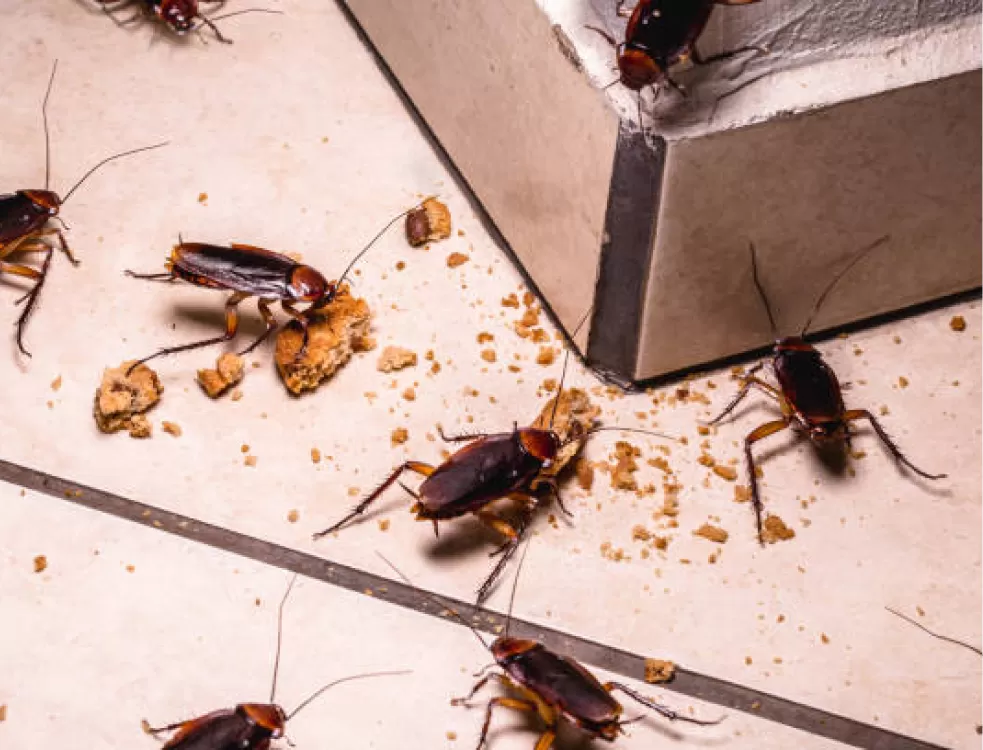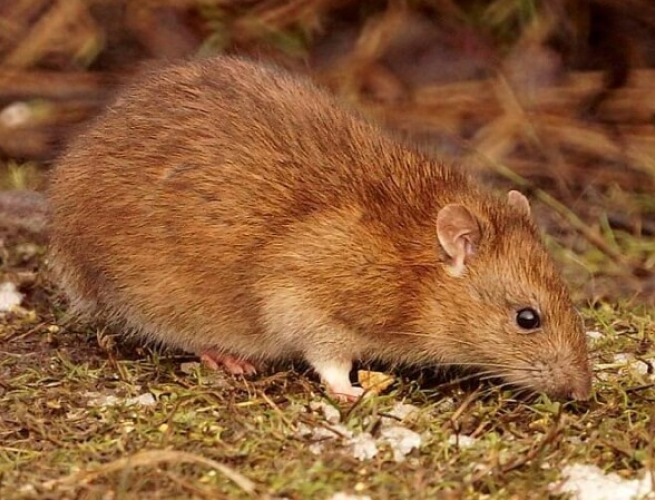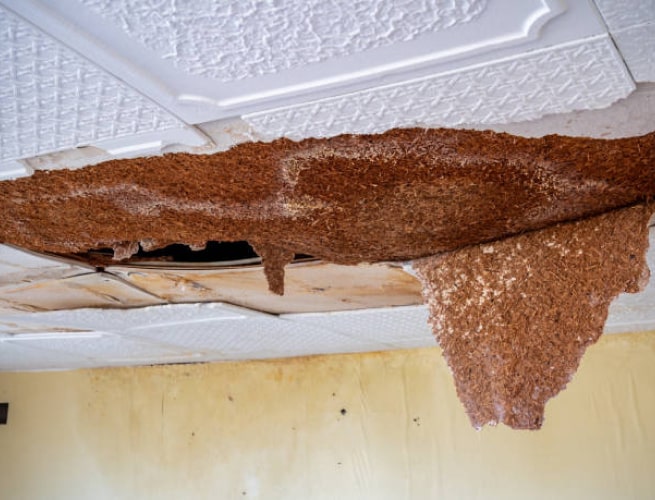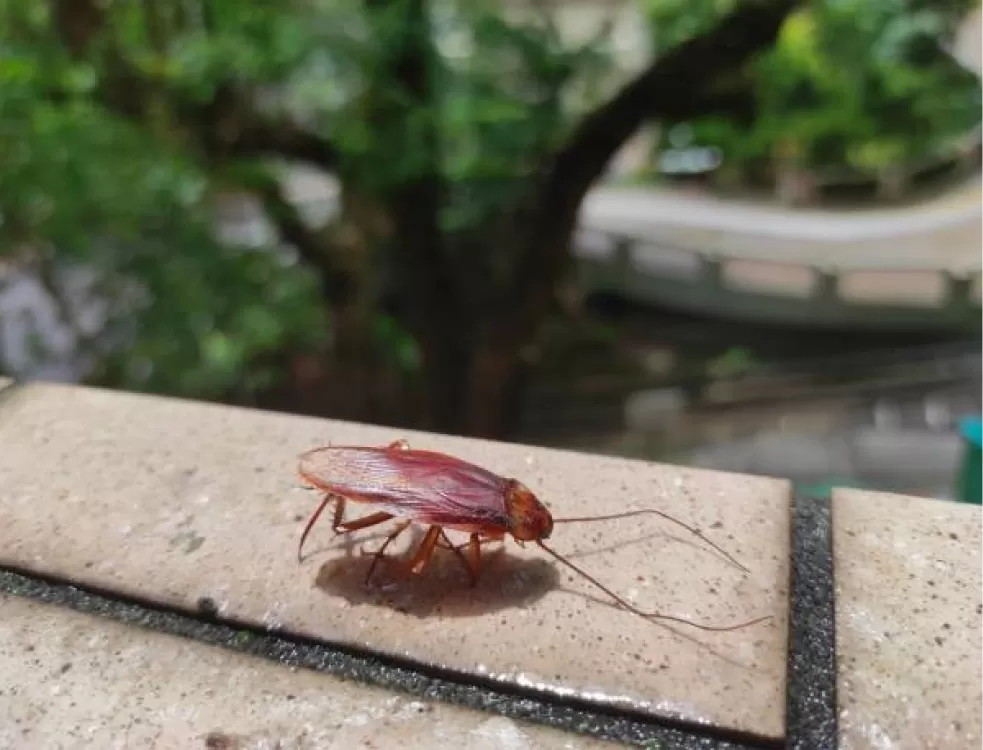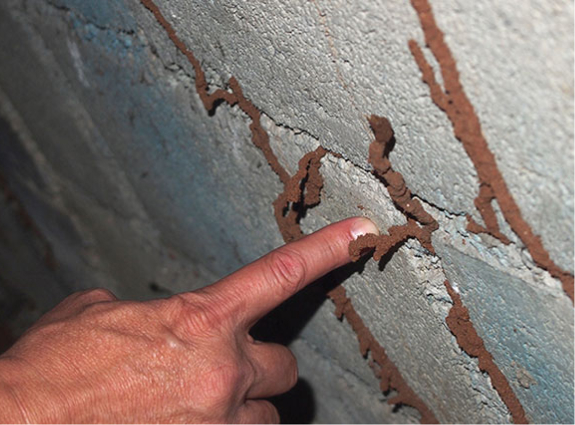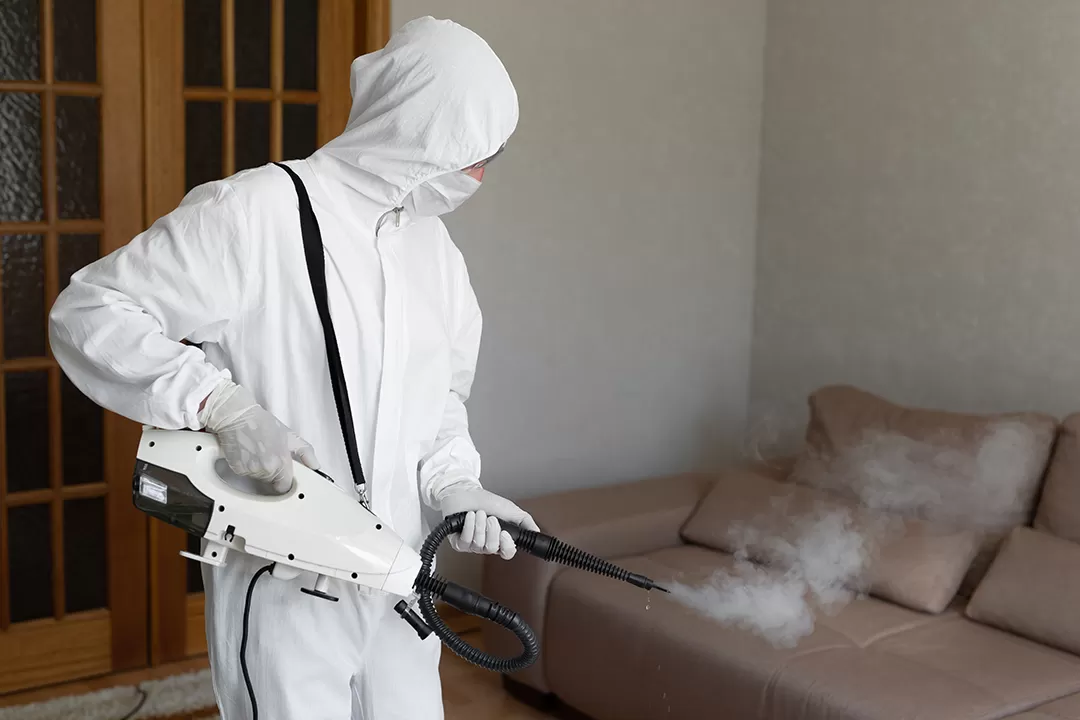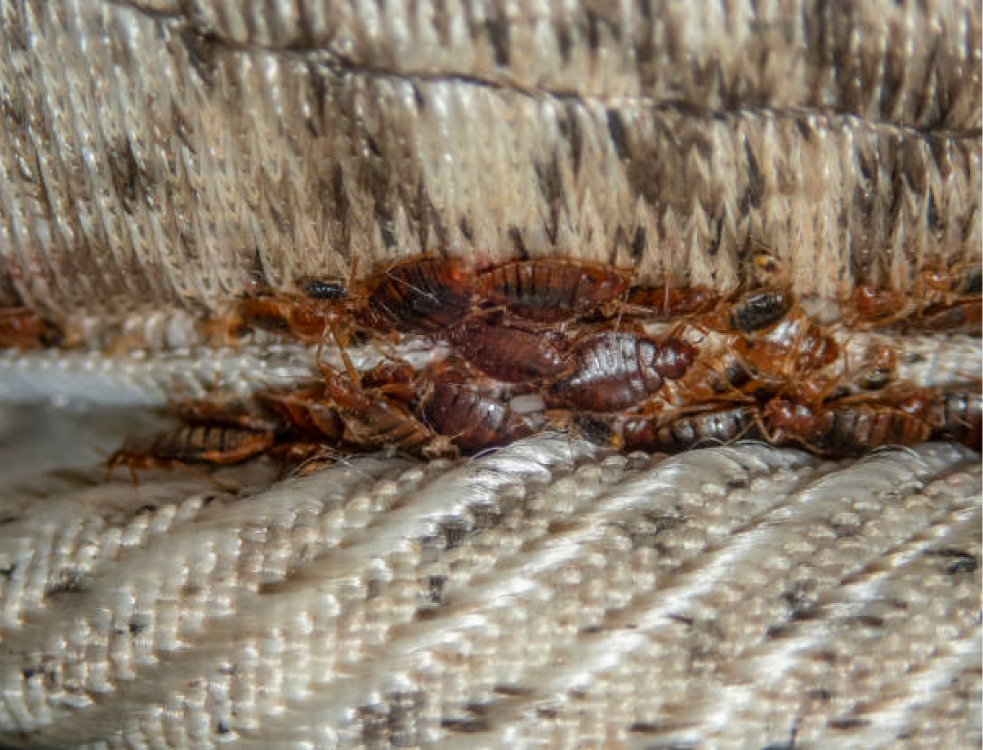Dealing with a bed bug infestation can indeed be a frustrating and overwhelming experience, especially when trying to kill bed bugs effectively. These intrusive pests not only disrupt your peace of mind but also present a significant challenge when it comes to effective bed bug control and removal. This article offers practical steps to help you identify signs of bed bugs, prepare your living space, and implement treatments that are effective for bed bug control. It covers everything from vacuuming and heat treatments to the use of insecticides and natural remedies, providing you with the necessary tools to reclaim your home. Furthermore, it discusses strategies for preventing future infestations, ensuring that your space remains free from bed bugs and other pests. Continue reading to equip yourself with the knowledge and strategies needed for successful bed bug removal.
Key Takeaways:
- Identifying signs of bed bugs is the first step to effective removal. Look out for bites, blood stains, or fecal matter on bedding and furniture. Identifying bug bites early can help in implementing timely bed bug treatment.
- Preparing the infested area by decluttering and vacuuming thoroughly will ensure a more successful treatment and help eliminate bed bugs effectively.
- Heat and insecticide treatments are the most effective methods for bed bug removal. Use natural remedies as a supplement to professional help from pest control companies.
Identify the Signs of Bed Bugs
Recognizing the signs of bed bugs is essential for effective pest management, particularly in densely populated areas like Singapore, where infestations can occur in homes, hotels, and public spaces.
Bed bugs are well-known for their remarkable ability to hide in cracks and crevices, and their presence can be detected through several telltale indicators. These include small, reddish-brown adult bed bugs, their eggs, and the itchy bites they leave on human skin. Understanding these signs is the crucial first step in the fight against these pests.
Recognizing the signs of bed bugs is essential for effective pest management, particularly in densely populated areas like Singapore, where infestations can occur in homes, hotels, and public spaces.
Bed bugs are well-known for their remarkable ability to hide in cracks and crevices, and their presence can be detected through several telltale indicators. These include small, reddish-brown adult bed bugs, their eggs, and the itchy bites they leave on human skin. Understanding these signs is the crucial first step in the fight against these pests.
Prepare the Infested Area for Treatment
Before starting any treatment for a bed bug infestation, it is crucial to prepare the affected area thoroughly to enhance the effectiveness of pest control measures.
Before starting any treatment for a bed bug infestation, it is crucial to prepare the affected area thoroughly to enhance the effectiveness of pest control measures. This preparation should include:
- clearing the space of clutter, which can also help in finding bugs’ hiding places,
- washing infested items in high heat,
- identifying potential hiding spots where bed bugs tend to thrive, such as mattresses, bed frames, carpets, and curtains.
Taking these steps can significantly impact the success of pest control services, allowing treatments to effectively target the nesting sites.
Vacuum Thoroughly
Vacuuming thoroughly is one of the most effective initial steps in controlling bed bugs, as it helps to reduce their population by physically removing them from your living spaces. Using a vacuum can be a fast response method in bed bug control.
When developing a successful bed bug treatment plan, it is essential to recognize that vacuuming not only eliminates adult bed bugs but also targets their eggs. These tiny pests can hide in various locations, making complete eradication quite challenging. To enhance effectiveness, it is advisable to use a vacuum equipped with a HEPA filter, which can trap even the smallest particles.
Key areas to focus on during vacuuming include:
- Your mattress and box spring, particularly the seams and folds.
- Bed frames and headboards, as these locations often harbor bugs.
- Carpets, especially those adjacent to the bed.
- Furniture and areas behind appliances, where bed bugs can easily remain unnoticed.
After vacuuming, it is wise to seal the vacuum bag immediately to prevent any potential escape of these pests. Regular vacuuming can play a crucial role in ongoing bed bug control, significantly contributing to a comprehensive pest management strategy.
Use Heat Treatment
Heat treatment stands out as a highly effective approach for eliminating bed bugs, primarily because these pests cannot withstand prolonged exposure to elevated temperatures. By utilizing professional-grade heat treatment, pest control specialists can increase the temperature in the infested area to a level that is lethal to bed bugs, along with their eggs and larvae. This non-chemical method is especially advantageous in sensitive environments, as it successfully eradicates bed bugs without the use of pesticides.
The process involves the use of specialized equipment that circulates hot air throughout the infested space, typically reaching temperatures between 120°F and 140°F. Remarkably, this technique can effectively eliminate these unwelcome guests in just one session, which may last anywhere from several hours to a full day, depending on the extent of the infestation.
The benefits of heat treatment include:
- Being environmentally friendly, as it eliminates the need for harmful chemicals.
- High efficiency, often requiring only a single visit.
- The ability to reach bed bugs and their eggs hidden in various inaccessible locations.
However, it is important to consider safety precautions. It is crucial to ensure that no heat-sensitive items, such as electronics and certain plastics, are present in the treated area. This method proves effective because it penetrates all materials, ensuring a comprehensive treatment that targets even the most concealed bed bugs.
Apply Insecticides
Applying insecticides is a widely recognized and effective approach in the fight against bed bugs, especially when combined with other pest control methods. Insecticides can kill bed bugs on contact and provide residual spray effects.

Modern insecticides are specially designed to target bed bugs, eliminating them on contact or through residual effects. This ensures that any newly hatched bugs are also affected. It is essential to select the appropriate insecticide, adhering to guidelines and safety protocols to safeguard both residents and the environment. Several types of insecticides are available for this purpose, including:
- Pyrethroids: These synthetic chemicals replicate natural insecticidal compounds found in chrysanthemums and disrupt the nervous system of bed bugs.
- Neonicotinoids: Targeting the insect’s nervous system, these are particularly effective against resistant strains.
- Insect Growth Regulators (IGRs): By interfering with the bed bugs’ life cycle, IGRs impede their development, ultimately reducing populations over time.
When applying any insecticide, adhering to safety precautions is crucial. It is important to wear protective gear, ensure adequate ventilation, and meticulously follow the manufacturer’s instructions. Additionally, consulting with pest control professionals can enhance the effectiveness of these treatments and mitigate health risks associated with improper usage.
Seal Cracks and Crevices
Sealing cracks and crevices is an essential step in comprehensive pest management, as it helps eliminate potential hiding places for bed bugs and prevents future infestations. Bed bugs are particularly skilled at concealing themselves in small spaces. By physically sealing these entry points in furniture, walls, and floors, homeowners can significantly reduce the likelihood of re-infestation. This proactive measure works in tandem with other pest control strategies and contributes to long-term bed bug elimination.
Identifying the most common areas where these pests might reside is crucial. It is important to closely examine the seams of mattresses, behind headboards, and within the folds of curtain fabric. Once these hotspots are located, the following approaches can be employed to seal them effectively:
- Caulking: Filling gaps in baseboards, around windows, and in walls with a high-quality caulk can be highly effective.
- Foam Sealants: These are ideal for larger cracks that require insulation.
- Repairing Screens: Ensuring that any damaged window or door screens are properly fixed will help prevent entry.
Integrating these techniques with professional pest management services can further enhance efforts to eradicate bed bugs.
Launder Infested Items
Laundering infested items is a crucial step in managing bed bugs, as it effectively eliminates these pests from clothing, bedding, and other fabric items that may harbor them. Washing items in hot water and drying them on high heat can kill bed bugs at all life stages, providing a reliable method to ensure that your belongings are safe after an infestation.
To maximize the effectiveness of this important process, it is recommended to wash items at a minimum temperature of 120°F (49°C) for at least 30 minutes. This duration allows the hot water to penetrate the fabric thoroughly, ensuring that any concealed bed bugs or eggs are exposed to lethal conditions. After the wash cycle, it is essential to dry items on a high heat setting for at least 30 minutes. The combination of heat from both washing and drying significantly increases the chances of eradicating these persistent pests.
Items to wash include:
- Clothes
- Bedding and linens
- Fabric toys and curtains
For non-washable items, it is important to seal them in plastic bags for several months to suffocate any remaining bugs. Implementing this laundering process not only protects your belongings but also acts as a vital component of a comprehensive bed bug treatment strategy.
Use Natural Remedies
Using natural remedies for bed bug control can serve as a viable alternative to chemical treatments, particularly for those seeking non-toxic solutions in their pest management strategies. Ingredients like diatomaceous earth are recognized for their effectiveness in eliminating bed bugs by damaging their exoskeletons, while other natural methods can help deter these pests from invading homes. Employing method of bed bug control such as diatomaceous earth can be essential in getting rid of bed bugs without harm.
As more individuals pursue environmentally friendly options, various natural remedies are gaining popularity. These non-chemical methods are effective for dealing with bed bug bites and hidden bed bugs. Here are some noteworthy solutions:
- Essential Oils: Oils such as lavender and tea tree have been investigated for their potential to repel bed bugs.
- Hot Water: Washing bedding and clothing in hot water can effectively kill bed bugs at all stages of their life cycle.
- Vacuuming: Regular vacuuming can help remove bed bugs and their eggs, particularly from hidden cracks and crevices.
- Steam Treatment: Applying high-temperature steam can effectively kill bed bugs upon contact.
Integrating these methods with traditional pest control practices can create a comprehensive approach that minimizes chemical exposure while effectively addressing the bed bug problem, ultimately keeping safe from bed bugs.
Seek Professional Help
In bedbug infestation scenarios, professional pest control is critical.
When faced with a significant bedbug infestation, seeking professional assistance is typically the most effective approach to ensure thorough treatment and long-term pest management. Pest control specialists possess the necessary knowledge, experience, and tools to address bed bug issues comprehensively. They employ a combination of methods, including heat treatments, insecticides, and integrated pest management strategies, all tailored to the specific situation at hand, often using bugs hide tactics and local pest control expertise.
The importance of hiring professionals cannot be overstated. Not only do they provide immediate relief, but they also help prevent future infestations. By relying on their expertise, you can expect a detailed inspection, precise identification of the pest, and access to advanced products that are not generally available to the public, ensuring you remain safe from bed bugs which feed on human blood.
Professional services offer several key benefits, including addressing bed bug eggs and adult female bed bug lays up to 500 eggs in her lifetime:
- Safety: They utilize treatments that are safe for both people and pets.
- Efficiency: Their methods are designed to ensure a swift eradication of infestations.
- Knowledge: Experts have a deep understanding of bed bug behavior and habitats, which allows for effective strategic planning, helping to prevent bugs back and bed bugs hide.
- Ongoing support: They can provide valuable advice on preventative measures to avoid future incidents.
Investing in professional pest control not only ensures peace of mind but also contributes to a healthier living environment, making it a crucial step in effectively addressing bed bug problems, including resistance in the common bed bug.
Prevent Future Infestations
In urban areas like Singapore, where bed bugs have been found, prevention is key.
Preventing future infestations of bed bugs is essential for maintaining a pest-free environment, particularly in urban areas like Singapore where these pests tend to thrive. By implementing proactive measures, such as conducting regular inspections, using protective covers on mattresses and box springs, and exercising caution while traveling, individuals can significantly lower the risk of encountering these troublesome pests in their homes, especially those that feed on human blood.
To further strengthen your defenses against bed bugs and transmit diseases, consider adopting the following practical tips:
- Regularly inspect second-hand furniture before bringing it into your home, as these items may conceal hidden pests.
- Ensure that your luggage is thoroughly checked and cleaned after traveling, especially after hotel stays where the risk of exposure is particularly high and bed bugs in Singapore may hitch a ride.
- Maintain a clutter-free environment; less clutter results in fewer hiding places for bed bugs.
- If you suspect an infestation, reach out to a reputable pest control company for effective treatment options that can swiftly address the issue, involving treatment methods that kill the bugs.
By remaining vigilant and incorporating these lifestyle changes, you can greatly reduce the likelihood of a bed bug infestation, contributing to a more comfortable living space, minimizing potential allergic reactions from bites.
Frequently Asked Questions
Learn more about without feeding tactics and effective treatment solutions.
What are the steps for effective bed bug removal using chemical methods?
To successfully remove bed bugs from your home, follow these steps: 1) Thoroughly inspect your home for bed bug infestations. 2) Wash and dry all bedding and clothing on high heat. 3) Vacuum all surfaces, including furniture, carpets, and curtains. 4) Use a bed bug spray or dust to treat infested areas. 5) Cover your mattress and box spring with bed bug-proof encasements. 6) Repeat these steps regularly to ensure complete removal.
Can I remove bed bugs on my own or should I hire a professional for DIY bed bug solutions?
While DIY methods may be effective for small infestations, it is highly recommended to hire a professional for severe bed bug infestations. Professionals have the necessary knowledge, equipment, and experience to completely eliminate bed bugs from your home.
How do I prevent bed bugs from coming back and bed bugs hide?
To prevent a re-infestation of bed bugs, it is important to take preventative measures. These include regularly inspecting your home for signs of bed bugs, regularly washing and drying your bedding and clothing on high heat, and using bed bug-proof encasements on your mattress and box spring.
What other pest control solutions does Aardwolf Pestkare offer beyond typical treatment and control?
In addition to bed bug removal, Aardwolf Pestkare offers a wide range of pest control solutions for termites, ants, cockroaches, rodents, and more. They also provide prevention services to help keep pests from entering your home in the first place.
Is it safe to use pesticides for bed bug removal or bug bombs?
When used correctly and by a trained professional, pesticides are safe for bed bug removal. However, it is important to follow all instructions and precautions listed on the product label to ensure your safety and the effectiveness of the treatment.
How long does it take for bed bug removal to be effective and take weeks?
The effectiveness of bed bug removal depends on the severity of the infestation and the treatment method used. In most cases, multiple treatments may be necessary to completely eliminate bed bugs. It is important to follow the instructions provided by the pest control professional and continue preventative measures to ensure long-term success.

